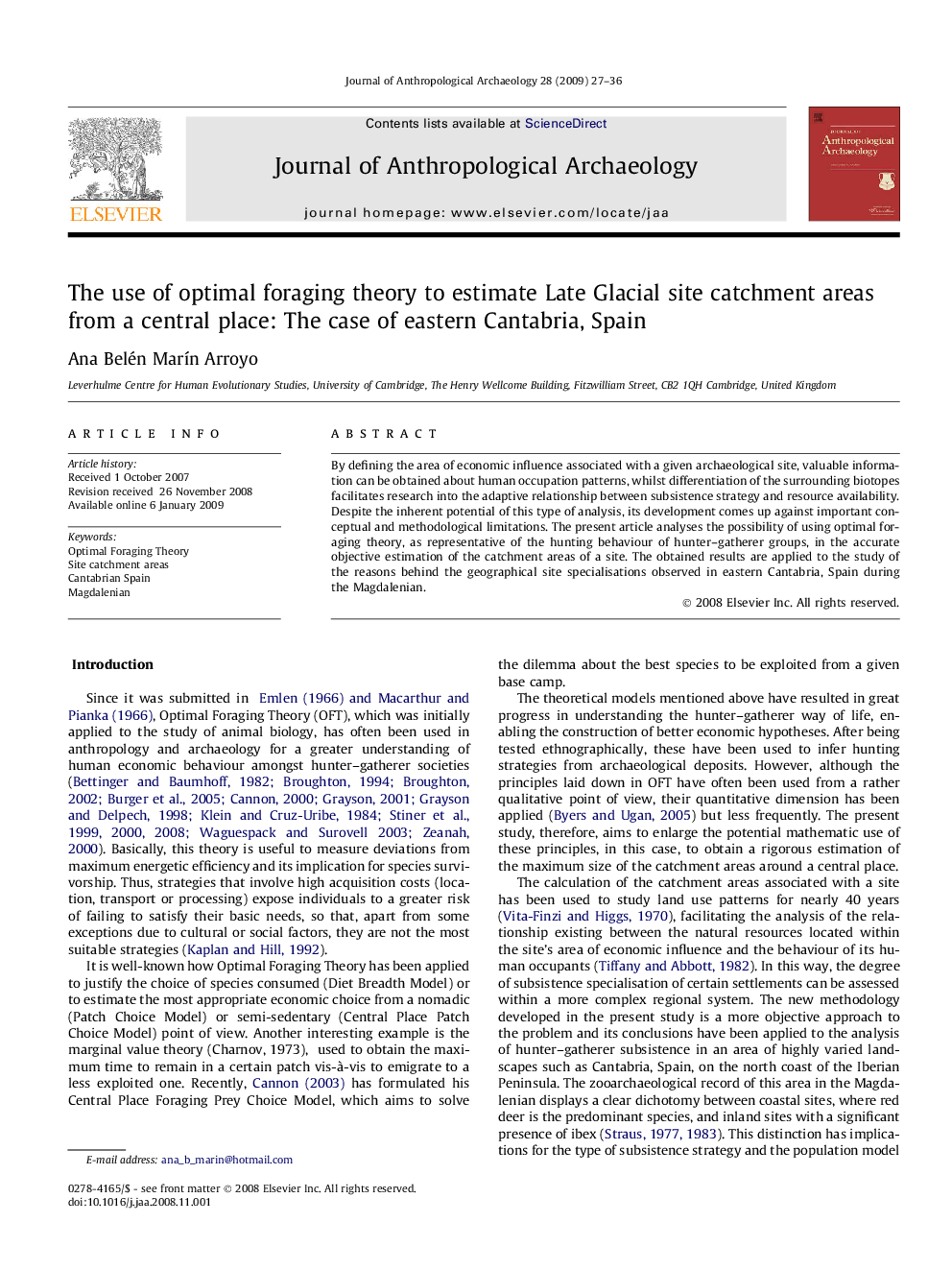| Article ID | Journal | Published Year | Pages | File Type |
|---|---|---|---|---|
| 1035137 | Journal of Anthropological Archaeology | 2009 | 10 Pages |
By defining the area of economic influence associated with a given archaeological site, valuable information can be obtained about human occupation patterns, whilst differentiation of the surrounding biotopes facilitates research into the adaptive relationship between subsistence strategy and resource availability. Despite the inherent potential of this type of analysis, its development comes up against important conceptual and methodological limitations. The present article analyses the possibility of using optimal foraging theory, as representative of the hunting behaviour of hunter–gatherer groups, in the accurate objective estimation of the catchment areas of a site. The obtained results are applied to the study of the reasons behind the geographical site specialisations observed in eastern Cantabria, Spain during the Magdalenian.
